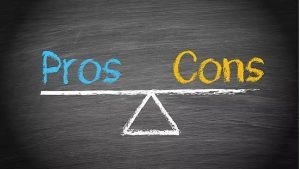
Many people go through challenges in life that affect their finances. Divorce, job loss, health issues top the most common reasons. I commend you on getting your finances sorted out and back on track. The moment you FILE that consumer proposal or bankruptcy is the time to start rebuilding your credit history. YES, there are companies that can help with that. Too often I see people waiting YEARS to pay off their debt program before getting credit again, which sets you back two years.
Mortgage Lenders/Banks view Bankruptcy, Consumer Proposal and Debt Programs all the same…bad credit management.
When will it come off my Credit Bureau?
Consumer Proposal Programs:
Transunion and Equifax state that it will take three years for a consumer proposal to fall off your credit score after it has been completed. So if your proposal takes you four years to pay, then your score will be damaged for seven years in total. If you are able to pay off your proposal quicker than your credit rating after a consumer proposal will get better faster. The key is that it will stay on your credit bureau for three years from completion.
Bankruptcy
A first bankruptcy for six years from the date of your discharge
A second bankruptcy for 15 years
TEN SECRET “To-Do’s” you must adhere too:
A mortgage is something most people will have for a very long time. The rules for mortgages have tightened up in the past few years. A LOT.
Once you have filed a debt program…you MUST adhere to these 10 rules.
Excuses don’t fly with Lenders.
You need to prove to THEM you are financially capable.
They owe you nothing.
- If you go bankrupt or file a consumer proposal while you have a mortgage, the Lender will see this when they review for your renewal and could deny your renewal and you will need to prepare to look for another lender/bank or they charge super high renewal rates. If you are considering either option or are currently in a proposal, please contact me to review your options far in advance of your renewal.
- No NSF charges on your bank accounts. Get yourself an overdraft to protect yourself.
- No missed mortgage payments – EVER
- No late payments on anything that reports to your Credit Bureau; credit cards, car loans, student loans or cell phone bills.
- No collections for any reason. Pay that issue and sort it out later.
- Double Bankruptcies or one Consumer Proposal and a Bankruptcy will make it difficult to get a mortgage. You can’t get around this anymore. It would be mortgage fraud. Lenders can look this up easily via the Bankruptcy Records Search.
- If you have a Bankruptcy that has property included, it will be VERY difficult for you to get a mortgage without at least 25% down payment (for a purchase) or equity (refinance). On top, you will likely be in an Alternative mortgage for a very long time with higher rates and fees.
- Get two tradelines. Credit Card, Car Loan or Line of Credit. You need to have two years of history and two of them with spending limits of at least $2,500.
- Don’t spend to the limits. Only use a max 50% of available credit.
Use a Mortgage Broker who specializes in Credit Repair; who can review your file with you on a semi-annual basis to keep you on track as mortgage rules change. - You need to look “squeaky clean” until your Bankruptcy or Consumer Proposal is removed from your credit bureau.
Contact a Dominion Lending Centres mortgage professional to be your partner once you have filed…or if you’re just in contemplation and the Banks have said NO to your debt consolidation, we will have solutions for you.
Contact me for your best mortgage options 705.669.7798 or trina@ndlc.ca
#trinamortgages #mortgages #ndlc #freedomofchoice
#bestmortgageforme #executive #firstimehomebuyer
If you found this information valuable, I only ask that you share with your friends and family.
Copyright DLC








